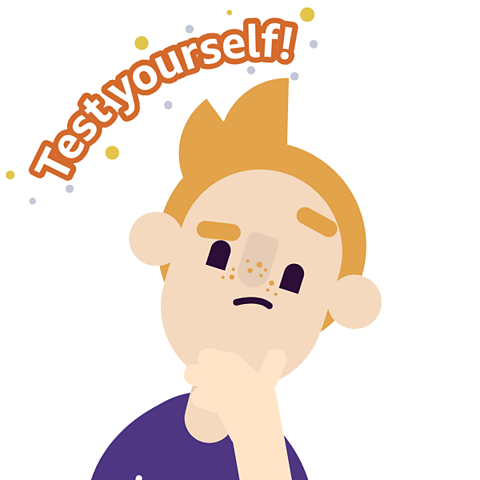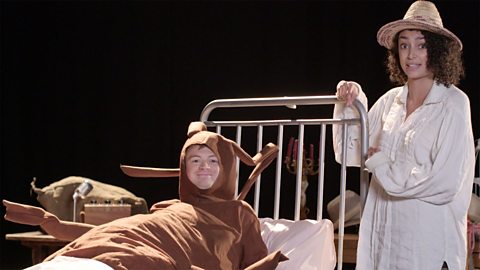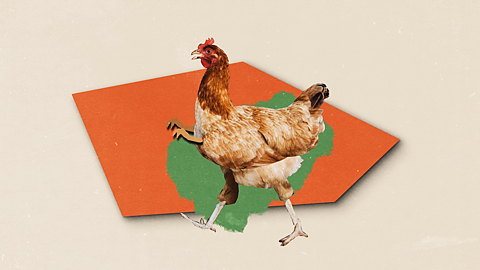Think about the stories you have read.
How did they begin? How did they end? What did the writer do to shape the story?
In Watership Down by Richard Adams, the story begins:
The primroses were over.
âŠand 400 pages later it ends:
Hazel followed; and together they slipped away, running easily down through the wood, where the first primroses were beginning to bloom.
The author has shaped the story to move from endings to new beginnings. What would have happened if he had written the story the other way round?
Introduction
Structure refers to how written text is organised - the way the story is ordered and shaped. The structure of the writing directs the readerâs understanding of characters and plot - it helps to reveal the plot in a way that shapes the reader's understanding and response to the story.
There are many different structural techniques that a writer can choose to engage and guide the reader, from the overall structure (the story arc) to the order of words (syntaxThe arrangement of words and phrases within a sentence.).
Video about how to use structure for effect
Learn how writers use structural techniques to guide the reader
Narrative structure
When writers write a story, they plan the structure of the story very carefully. A narrative or story arc is the name given to the overarching pattern of a story. Stories traditionally have a beginning, middle and an end.
To add more detail to this idea, we could split a story into sections:
- Exposition â the beginning of the story, where the scene is set and the characters are introduced.
- Conflict â a conflict or problem occurs which the character has to overcome.
- Climax â the conflict or problem hits its peak.
- Resolution â the problem is solved â either happily or sadly.
A classic example of this is the Greek myth of Icarus. Icarus is a boy who escapes his prison on an island by creating wings made from feathers held together by wax. Icarus though flies too close to the Sun, causing the wax to melt and Icarus to crash into the sea.
Imagine the arc of the story as a line curving up or down on a graph.
- The story starts with Icarus in a negative place (the exposition followed by the conflict/problem)
- He escapes (the graph starts curving upwards) and it looks like everything will be positiveâŠ
- But Icarus goes too high (climax)
- And the story ends in a negative place again (the graph curves back down for the resolution)
Lots of stories follow this arc from Macbeth by William Shakespeare to Great Expectations by Charles Dickens to The Hunger Games by Suzanne Collins.
Click on this picture to show the story arc of Cinderella:
All stories have movement â something has to change or happen â and this is what creates the pattern or arc of the story. The arc can take many different shapes.
What kind of story arc do you prefer?
- The only way is up. For example, rags to riches with a âhappily ever afterâ
- The only way is down. For example, riches to rags with an âunhappily ever afterâ
- A rollercoaster. For example, everything seems great but then something goes horribly wrong (oh no!) but luckily gets better again (phew!) but goes wrong again (eek!) only to get better again⊠or does it? (sigh).

Narrative âhooksâ and openings
Writers use structure to hook a readerâs attention in different ways. The hook engages the reader in the narrative (story). In To Kill a Mockingbird, Harper Lee begins her story:
When he was nearly thirteen, my brother Jem got his arm badly broken at the elbow. When it healed, and Jem's fears of never being able to play football were assuaged, he was seldom self-conscious about his injury.
In this opening, Lee suggests that the story will be told in flashback (memories) by using the past tense and referring to events over time. It also encourages the reader to connect with the main characters with feelings and experiences that the reader can identify with.
By contrast, Girl Missing by Sophie McKenzie begins:
Who am I?
I sat at the computer in Mumâs office and stared at the essay heading. New form tutors always give you homework like that at the start of the year.
Who am I?
Immediately McKenzie suggests the story will be told from the characterâs first person point of view and that the story will unfold as it happens (using a mixture of present and past tense). The reader understands that the seemingly basic and straightforward question âWho am I?â is not an easy question for this character to answer.
Read more about how to engage the reader in a story opening.
Narrative endings and closings
Sometimes stories have a neat 'closed' ending â a resolution or denouement when the problem/mystery is solved or the conflict is resolved and there are no loose ends left to worry the reader.
Sometimes the writer deliberately creates an 'open' ending. The story is left on a cliff hanger or is left ambiguous. The reader is left to wonder what will happen next or work out what has happened and deal with the fact that there may be more than one interpretation. For example in The Giver by Lois Lowry, the ending is left deliberately ambiguous and the fate of the characters is only resolved in later novels in the series.
More endings that are fun to write include:
- Unexpected twists, eg the detective was the murderer â eek!
- Cyclical narratives, eg the ending almost exactly mirrors the beginning or takes the reader back to where the story started.
- Expanded endings, eg often a jump forward in time which tells us about the characters years after the events of the story.
Narrative perspective
The narrative perspective is the point of view from which the story is told. A writer decides on the narrative voice and how to use this in the structure of the story. A story may be told in third person, as though the narrator is an outsider or observer looking in, and using pronouns such as âheâ, âsheâ or âtheyâ. Or it might be told in first person, from the point of view of one or more of the characters in the story, using the pronoun âIâ âweâ or âusâ.
In The Curious Incident of the Dog in the Night-Time, Mark Haddon uses first-person perspective to tell the story from Christopherâs point of view. This perspective helps to structure the text as a convincing internal monologue. As Christopherâs thought processes are unfamiliar to many people, the choice to write in his voice directs the readerâs response to events in the novel in unusual and unexpected ways. For example, in the opening his voice is unusually factual and precise about a shocking discovery:
It was 7 minutes after midnight. The dog was lying on the grass in the middle of the lawn in front of Mrs. Shears' house. Its eyes were closed. It looked as if it was running on its side, the way dogs run when they think they are chasing a cat in a dream. But the dog was not running or asleep. The dog was dead.
Use of dialogue and internal monologue
Writers can also shape their writing by choosing when to use dialogue and when to use internal monologue.
Dialogue
Dialogue is the words spoken by the characters in the story. What a character says and how they say it can help the reader understand a character more deeply. A couple of sentences of dialogue can be very revealing. For example, are they feeling happy or sad? Do they ask lots of questions or tell others what to do?
Internal monologue
Writers use this to express the thoughts in a characterâs head. The inside of the mind (internal) is spoken by one voice (monologue). We can âhearâ what they are thinking. It allows us to understand their private thoughts and emotions, their ideas about other characters, and can be used to clearly show us any internal conflict (for example, when they are deciding what to do).
In Noughts and Crosses by Malorie Blackman, there is a scene when one of the main characters, Callum, is questioned by the train guards. Blackman decides to use both dialogue and an internal monologue (written in italics) to reveal his private thoughts â what he wishes he could say aloud.
âWhere are you going?â
None of your business.
âCelebration Park.â
âWłóČâ?â
To cut my toenails.
âPŸ±łŠČÔŸ±łŠ.â
âWhere do you live?â
On the moon.
âM±đČč»ćŽÇ·É±čŸ±±đ·É.â
Foreshadowing and flashbacks
A flashback describes past events related to the present. Foreshadowing gives hints of future events - but the reader may only realise this later when the future event has happened.
Flashbacks can make readers feel more connected to the characters and help them to understand what is happening and why it is happening now in the story. For example, in Private Peaceful by Michael Morpurgo most of the novel is written in flashback. It is World War One. Tommoâs friend Charlie is to be executed for âcowardiceâ in the morning. Tommo spends the night reflecting back on his past - revisiting in flashback all the events leading to this tragic moment when Charlie will be shot.
Foreshadowing can help build suspense, hint at future plot events or make connections between different moments in the story. For example, in Macbeth by William Shakespeare the witchesâ predictions foreshadow the events of the play - Macbeth does indeed become King. More subtly, in Frankenstein by Mary Shelley, we find out that Victor (who creates the monster) clearly remembers as a child being excited by a lightning strike and the power of electricity. This memory foreshadows the moment when Victor âinfuses a spark of beingâ into his monster; bringing it to life.
Structural techniques
As well as arranging the events of the story, a writer uses other structural techniques to help shape their writing. These can occur at word, sentence or paragraph level.
Word order (syntax)
The syntax is the arrangement of the words and phrases in a sentence. At the start of Rebecca, Daphne du Maurier writes:
Last night I dreamt I went to Manderley again. It seemed to me I stood by the iron gate leading to the drive, and for a while I could not enter, for the way was barred to me.
The opening sentence straightaway provides the reader with a sense of time â âlast nightâ, place â âManderleyâ and perspective â âI dreamtâ. The syntax implies fact and truth, which is immediately contradicted in the second sentence by the mystery which is created. Why should this place be âbarredâ to the narrator?
Another example of using unexpected syntax is the opening to A Christmas Carol by Charles Dickens:
Marley was dead, to begin with.
At first the sentence seems very simple until the unexpected twist at the end. How can someone or something be dead âto begin withâ? Straightaway the reader is left to puzzle out this mystery. Will it be a ghost story or something else?
Sentence and paragraph length
Short sentences can help to create a tense atmosphere. A one line or even one word paragraph can add dramatic impact. For example in Lark by Anthony McGowan, Nicky is terrified that his brother is in trouble:
But that wasnât what made the sick feeling surge up inside of me. There was something else floating on the water along with the snowflakes.
It was a hat.
It was a Leeds United bobble hat.
The short sentences and one line paragraphs have been clearly structured to show Nickyâs shock when he spots his brotherâs hat in the water.
Test yourself
In the opening to the novel Child I by Steve Tasane what techniques are being used?
Today the mud is dry and crusted and blowing in my eyes. Today is also my birthday. I asked one of the grown-ups what is todayâs date.
âIs it July third?â I asked.
âSomething like that,â they said.
July third is the date of my birthday. I think it is the date of my birthday.
Iâm sure it is. Iâll be ten. I am ten. I am certain.
- Short sentences and repetition
- Dialogue and internal monologue
- All of the above
Answer: 3. All of the above.
This opening uses short sentences, repetition, dialogue and internal monologue.

Key points
When investigating narrative structure, you can look out for what decisions the writer has made in these areas of their story:
- the arc of the story and the order in which things happen
- the opening
- the ending
- the narrative perspective
- the use of dialogue and internal monologue
- the syntax
Be on the hunt for any choices where the writer does something unusual or different to what you expected.
Make sure to think about the impact of these choices have on the reader and why the writer may have chosen them.
Test your knowledge
Play Bitesize secondary games. gamePlay Bitesize secondary games
Have fun playing science, maths, history, geography and language games.

More on Fiction writing
Find out more by working through a topic
- count7 of 8

- count1 of 8

- count2 of 8
